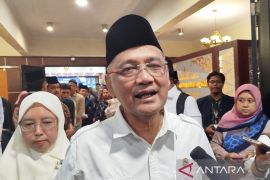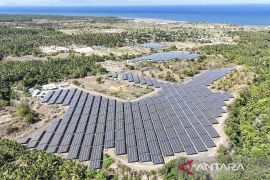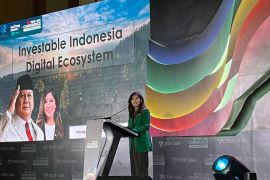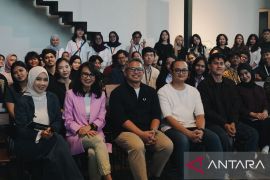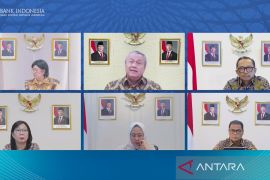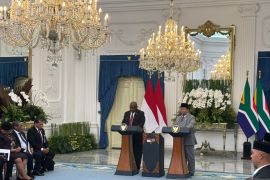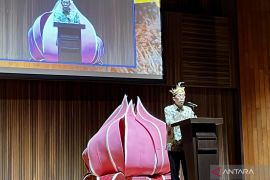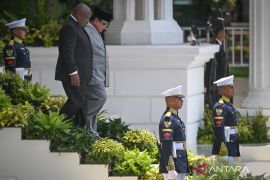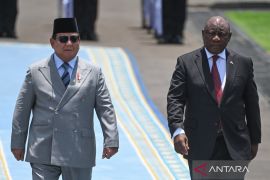Indonesian Chamber of Commerce and Industry (Kadin) Deputy Chairman for Organization and Membership Anindya Bakrie has opined that the revitalization of the industrial sector should be prioritized because it is a major driver of the nations economy.
In the third quarter of 2016, the industrial sector slowed and grew by only 4.56 percent, while its contribution to the economy reached only 19.9 percent, or lower than the 20.48 percent seen in the previous quarter.
However, Industry Minister Airlangga Hartarto said he was optimistic that the industrial sector would start to recover in 2017.
The minister remarked in a statement here recently that President Joko Widodo (Jokowi) had instructed him to increase the contribution of the industrial sector to the countrys economy.
In carrying out the instructions of the president, Airlangga said he would need the strong commitment of all stakeholders from upstream to downstream industries, policy makers, and industrialists.
According to him, his optimism that the industrial sector would recover was based on the series of government economic policy packages released to create a conducive business climate, deregulation, large-scale infrastructure development, and cutbacks in industrial gas prices.
Earlier this year, the government released its 10th economic policy package aimed at boosting investment and protecting small and medium enterprises as well as cooperatives.
If everything goes according to plan with these packages, the 5.4 percent growth target for the industrial sector will be reached in 2017, Airlangga stressed.
The target for 2017 is higher than that set for the industrial sector at around 4.8-5.2 percent in 2016.
Airlangga noted that President Jokowi was especially concerned with efforts to boost economic growth, create jobs, and reduce poverty.
The economic growth target is set at 5.2 percent in 2017 and 7 percent in 2018, while the investment target is Rp600 trillion in 2017 and Rp800 trillion in 2018, he stated.
The government has even set development targets up to 2035, as shown in the National Industrial Development Master Plan 2015-2035, which outlines visions and missions of the government alongside industrial development strategies.
The targets include non-oil/gas industrial sector growth of 10.5 percent, the contribution of the non-oil/gas sector to the countrys Gross Domestic Product (GDP) reaching 30 percent, and the contribution of exports of manufactured products to the total export earnings reaching 78.4 percent, up from 70 percent in 2015.
In the meantime, Head of the Industrial Development and Research Center of the Industry Ministry Haris Munandar explained there are three phases of strategic steps involved in reaching the targets.
The first phase is in the 2015-2019 period, which focuses on increasing added value and optimizing natural resources through the development of the downstream industry in the agricultural, mineral, and oil/gas sectors.
The second phase is in 2020-2024 , which focuses on improving competitiveness with environmental concepts, by strengthening the industrial structure and mastering technology with support from skilled human resources.
The third phase is in 2025-2035, which is intended to make Indonesia a highly industrialized country with a strong national industrial structure. The country will also become globally competitive based on innovation and technology, Haris remarked.
Haris noted that programs and policies should be directed toward the development of export-oriented and labor-intensive industries such as food and beverages, textiles and textile products, footwear and electronics, and telematics, which can contribute considerably to the GDP and create many jobs.
He said industrial development in the coming years would be focused on 11 groups of industries covering food, pharmaceuticals, cosmetics and health equipment, textiles, leather, footwear, transport equipment, electronics and telematics, energy generation, capital goods, components, auxiliary materials, industrial services, upstream agricultural-based industries, base metals, mining, oil and gas, the creative industry and so on.
President Jokowi stated earlier that the government would provide infrastructure in the fields of transportation and energy, electricity and gas, telecommunications, water resources and sanitation, human resources, and technology to support the industrial estates.
The Kendal Industrial Estate has been built in cooperation with Singapore. The president has also called for the immediate completion of the Pemalang-Batang-Semarang toll road.
Infrastructure should be built in such a way that it supports the growth of the local economy and improves the lot of the local people, he added.
"Therefore, there is no reason for investors to harbor any doubts about investing in the Kendal Industrial Estate in the fashion industry, furniture, food industry, smart industry, manufacturing, and so on," the president stressed.
There are three important characteristics of industry. Firstly, workers can be absorbed in labor-intensive, capital-intensive, knowledge-based, and advanced technology industries.
Secondly, there is high productivity in industries, and thirdly, industry can produce goods and services that meet the needs of other sectors.(*)
Reporter: Otniel Tamindael
Editor: Heru Purwanto
Copyright © ANTARA 2016
